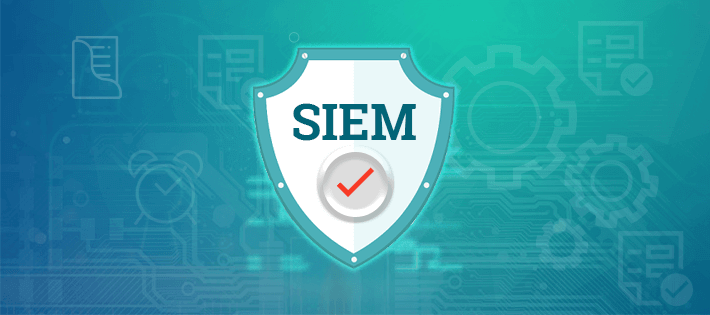Last Updated on December 20, 2024 by Satyendra
 SIEM stands for Security Information and Event Management, and plays an important role in data security. SIEM applications and services are typically capable of aggregating data from various sources, searching through logs, spotting anomalies and patterns, and providing long-term data retention, which can be used to assist with forensic investigations. Additionally, SIEM solutions provide automated alerts and reports, which are presented via an intuitive dashboard etc.
SIEM stands for Security Information and Event Management, and plays an important role in data security. SIEM applications and services are typically capable of aggregating data from various sources, searching through logs, spotting anomalies and patterns, and providing long-term data retention, which can be used to assist with forensic investigations. Additionally, SIEM solutions provide automated alerts and reports, which are presented via an intuitive dashboard etc.
As IT systems become increasingly more complex, distributed and harder to maintain, the role of SIEM technology becomes ever more important. SIEM products have been around for a long time; however, until fairly recently, these products were only really accessible to large organisations with sizable budgets and a dedicated team of security personnel. In recent years, the cost and complexity of commercial SIEM solutions has decreased to the point where most businesses, big or small, have little excuse not to be using them as the back-bone of their IT security strategy.
Below are some of the main reasons why your organisation should invest in a sophisticated SIEM solution:
Meeting Compliance Requirements
There are many laws and regulations surrounding data protection. Some of these include; PCI-DSS, HIPAA, SOX, and the forthcoming GDPR. Complying with these regulations requires time, effort and resources. However, with the help of SIEM technology, the task of compliance is made much easier. SIEM technology will aggregate and archive log data, as well as provide alerts and reports to satisfy requirements.
Supporting Operations Processes
The growing size, complexity and fragmentation of organisations is making it more difficult for them to share information, collaborate on projects and co-ordinate operations. SIEM solutions are able to aggregate data from multiple sources into a single dashboard, making it a lot easier for large organisations to monitor important system events.
Detecting Zero-day threats
Zero-day attacks are usually caused by software vulnerabilities. Firewalls, Intrusion Defence Systems (IDS) and Intrusion Prevention Systems (IPS) can be very useful for monitoring suspicious activity between endpoints and perimeters within your network’s infrastructure. However, such solutions are unlikely to help you detect zero-day attacks. SIEM solutions, however, can be setup to spot patterns and anomalies that may signify an attack. For example, if X number of Y events occur over Z period of time, an alert can be raised and/or a script can be executed to stop the attack from causing further damage.
Advanced persistent threats
APTs attacks are where an unauthorized person gains access to a network and establishes a back door, which allows them access the network as they wish without being discovered. They will often use their access to steal sensitive information. In order to help mitigate these attacks, organisations rely on firewalls, IDS/IPS, network segmentation, HIDS etc. However, the problem with these technologies is that they each generate large volumes of data, which can make it difficult for admins to keep track of what’s going on. Once again, SIEM solutions can solve this problem by aggregating the data from each system into a single dashboard. An SIEM solution will audit the data (in real-time) and alert the administrators of any unauthorised access attempts, as well as other suspicious events.
Identifying the cause of a security breach
In event of a security breach, you will need to carry out some sort of forensic investigation. You will need to find out who, what, where and when the breach took place. Such investigations not only serve to help mitigate future attacks, but may also be required by law. Without the help of SIEM technologies, forensic investigations are a slow and painful process. SIEM solutions allow you to quickly gather the information you need, and output the information in the form of a report, which can be used to satisfy the legal requirements.
Conclusion
So, do you still need an SIEM? The answer is yes, but only if you can afford one. SIEM solutions tend to be very expensive, difficult to deploy and their reports are often very hard to understand. Additionally, there are solutions on the market that are available at a more realistic price point and provide the ability to perform a lot of the functions organisations look for in a SIEM solution. Lepide Data Security Platform is one of these solutions. It provides hundreds of pre-set, easy-to-read reports that allow you to perform in-depth forensics into critical changes as well as meeting all manner of compliance requirements. While Lepide Data Security Platform doesn’t do everything a SIEM solution does, it does enough to ensure that organisations can increase security, streamline IT operations and overcome compliance challenges for a fraction of the cost.


 Group Policy Examples and Settings for Effective Administration
Group Policy Examples and Settings for Effective Administration 15 Most Common Types of Cyber Attack and How to Prevent Them
15 Most Common Types of Cyber Attack and How to Prevent Them Why AD Account Keeps Getting Locked Out Frequently and How to Resolve It
Why AD Account Keeps Getting Locked Out Frequently and How to Resolve It
